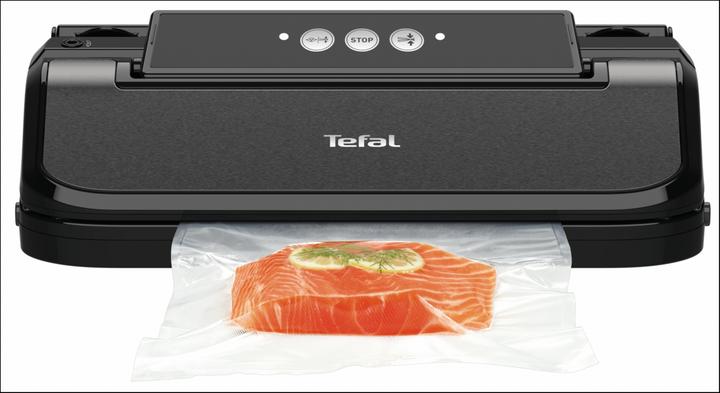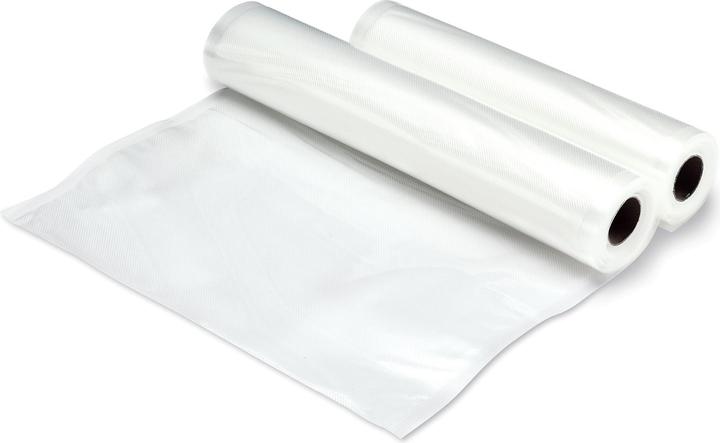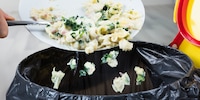

Sous vide: food from a bag
I’m not a natural-born cook, so I’ve always left preparing meat to my boyfriend. But that’s about to change. Will I finally get the hang of it with the sous vide method?
A juicy filet – seared on the outside, tender and pink on the inside – is any amateur chef’s dream. Personally, I’m still waiting for that dream to come true. Any meat I’ve ever prepared was either still raw inside, cold or leathery. No way would I serve that to anyone but myself, so I carried out all trial runs in secret. That’s because I’m a perfectionist. Whenever I have guests over, everything needs to be flawless. So I’m always a little tense before the first bite is taken. Is the meat undercooked? Are the potatoes overdone? In view of the stress, the sous vide method sounds very tempting to me. A foolproof cooking method that, admittedly, requires a little effort. I wonder if I’ll finally create the perfect meat dish.
What’s sous vide?
The principle of sous vide makes sense: vacuum-packed meat is cooked in water at a constantly low temperature. Vacuuming ensures that juices and flavours don’t escape. It’s also meant to keep the meat tender and aromatic. Another thing in favour of the method is that you can’t overcook the meat because the water is kept at a constant temperature. In other words, the core temperature of the meat always corresponds to that of the water temperature. This makes the method simply – even for people like me. Fish, eggs and vegetable can also be prepared this way.
Alongside a sous vide rod, you’ll need a vacuum sealer, vacuum foil and time. Lots of time. Sous vide takes quite long. Will it be worth the effort?
Underwater love
For today’s experiment, I bought 450 grammes of filet of pork. To season it, I used spices by Sonnentor, sea salt and black pepper. And a bit of clarified butter right at the end. Done! The vacuuming virtually presses the seasoning into the meat. So hold back with the spices. My first mishap: I was a bit ham-fisted with the smoked sea salt. Let’s hope it doesn’t ruin the whole thing.
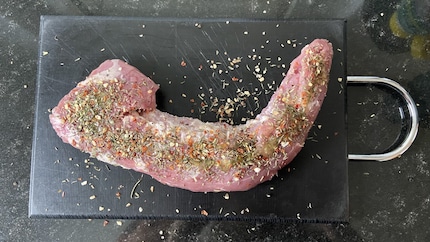
And now for the important part – vacuuming. The vacuum sealer I’m using for this test comes with a built-in foil cutter. I cut the right size of sealing foil to wrap my filet in. I seal one of the two ends. This leaves me with a kind of bag. You could also opt for a prefabricated vacuum sealing bag. I put my filet inside before removing all the air inside with the vacuum sealing machine. This takes less than a minute. Vacuuming meat makes it keep longer and taste more aromatic if you add seasoning.
So vacuuming is not just great for sous vide cooking but also a space-saving way of storing food in your fridge or freezer. For years, I only had one of those tiny freezer compartments, so this is an aspect I particularly appreciate. But I digress. Back to the pork. I pop it in the fridge for the time being.
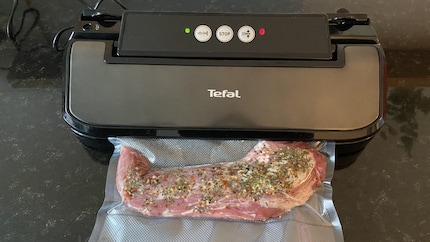
One hour before I start the vacuum cooking process, I take the filet out of the refrigerator. The meat should be at room temperature for sous vide cooking, just like it should when you’re frying it. This is to avoid the preheated water from cooling down too much when you immerse the vacuum bag.
An hour later, I attach the sous vide rod to a large pasta pot filled with water. As soon as the thermometer on the rod shows the right temperature (in the case of my filet, that’s 61° Celsius), I place the pork into the hot water and set the timer for 115 minutes. The manual that came with the vacuum sealer was where I found out about the cooking time and required temperature for the meat. I leave the rest to my sous vide rod. It’s the boss when it comes to keeping the water at a constant temperature. All I have to do is make sure that there’s always enough water in the pot during the cooking process. Hot water does tend to evaporate quite quickly.
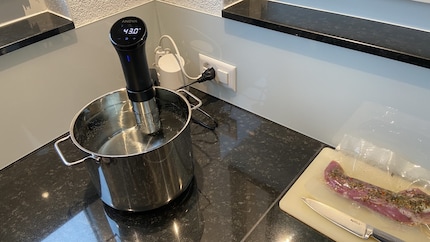
These 115 minutes feel like the longest minutes of my life. Nervously, I check the pot every five minutes. I’m not sure if I’m nervous in anticipation of dinnertime or if it’s the annoying sound the rod is making. It reminds me of a dentist’s drill.
A little side note on my sous vide rod: there are various models on the market. My one can be controlled by mobile phone. In other words, you could activate it while you’re out and about. This would require placing your vacuumed meat in a pot with water before you leave the house. To prevent it from going bad, it’s advisable to add a few ice cubes to the water to keep it cool. Once that’s done, you can leave and remotely activate the sous vide rod whenever you like.
It’s what’s inside that counts
After 115 minutes my timer frees me from agony. I pull the meat out of the water with a pair of cooking tongs and, using a knife, carefully cut open the vacuum bag over the sink. Next, I drain off the juice. «Yum, now that’s what a nice piece of meat should smell like,» I think to myself. My filet of pork has definitely passed the sniff test. Before serving the pork, I flash fry it in a hot pan to make it crispy on the outside.
This is a point I’ve come to many times. It’s when the meat looks amazing on the outside but the inside is underwhelming. I slice the meat into small pieces with slightly shaky hands. The inside of the filet is pink through and through. My mouth starts to water. The first bite is a dream. And so are the following ones. Crispy on the outside, juicy on the inside. It melts in my mouth. I never would’ve thought I was capable of something this delicious. Please excuse me while I finish this up alone.
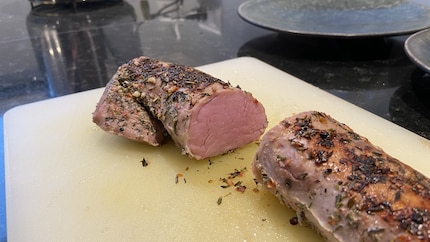
My verdict
I'm amazed. Thanks to the sous vide method, I know dare to prepare meat for dinner guests. Until now, this was something I’d leave to my boyfriend or even the guests when using a tabletop BBQ. The only catch is that you need to flash fry the meat right before serving it (i.e. when your guests are already here). As I have a combined kitchen and living room, my visitors will have to watch me. It’s a problem low temperature cooking doesn’t have, because the meat is first fried and then put in the oven until the core temperature is reached. However, I can easily live with this drawback, as it also means that my oven isn’t being used for hours. What’s more, I can be sure that the sous vide method will cook the meat to perfection. And in case you were wondering, my sea salt slip-up at the start did not ruin the pork filet. On the contrary, I still daydream about the filet now. 😉
When I’m not exploring the depths of the sea as an open water diver, I enjoy plunging into the world of fashion. On the streets of Paris, Milan and New York is where I keep my eyes peeled for the latest trends. And I’ll show you how to take them from the catwalk to your everyday life.
Practical solutions for everyday problems with technology, household hacks and much more.
Show all